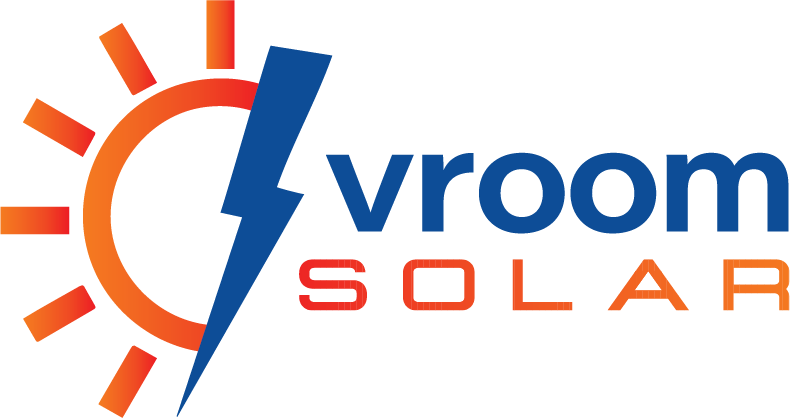No battery???
We get this question a lot and we understand why. With a solar generator, what do you do at night or on a cloudy day? Vroom Solar kits are solar-direct, meaning you don’t need a battery to produce and use power. Our patent-pending technology converts solar directly to usable power. Other solar power systems need a battery to even produce power. Batteries are the most expensive and highest maintenance piece of traditional off-grid solar energy systems. That’s why we wanted to eliminate the need for a battery.
Also, using the power produced on-site first is the most efficient because there is less energy lost through conversion and transmission across multiple lines or inverters and batteries. This is great for many scenarios, such as contractors working on job sites during the day, or power for outbuildings too far and costly to run electricity to. Another example is charging electric tools such as mowers or weed eaters, recreational vehicles such as electric ATVs, e-bikes, or LSVs, or even wireless power for a boat dock or remote cabin.
But for peace of mind, if you’re looking for a true backup power source in the event of grid failure or at night, you might choose to store excess power in a battery. We feel like it’s a better solution to give you the user the option to have a battery if wanted, and if so, whatever kind fits your needs best. There are several great battery options for power storage during nighttime or grid failure and Vroom Solar kits will work with any portable battery with a standard 110v charging cord. The difference with Vroom Solar is that a battery is not necessary to have solar powered energy in the first place. Our kits are an off-grid, portable solution applicable to all kinds of situations. Check out our “Uses” page for more ideas. Still, when backup power is needed at night or during a grid failure, Vroom Solar kits are your go-to power source to recharge that battery for the upcoming night or another day without the grid. After all, a battery still needs a power source to recharge. Vroom Solar only needs sunlight to produce usable power.
Another option besides a backup battery is to reframe thinking about what a “battery” actually is. Many people don’t realize that solar modules are classified as batteries. This was part of the inspiration for Vroom Solar to eliminate the necessity for a(nother) battery. If solar modules store energy, why can’t we convert that directly to usable power on-site and skip the additional (expensive) battery? A battery is simply to store energy, so how else can we “store” energy? Heating your tiny house during the day with a Vroom Solar kit, then allowing that structure to retain the heat overnight is by definition “storage.”
The Alternating Priority Charging feature of Vroom Solar allows you to plug in your devices based on a hierarchy of need, then let the Automatic Solar Load Management technology alternate through the outlets, based on supply and demand (power availability and draw). If the devices in outlet 1 are fully charged, the patent-pending technology alternates to outlet 2. If sunlight conditions are low, it may only be able to power 1-2 outlets at a time, based on how much draw is on those outlets. Once outlet 2 is charged, the technology switches the power to outlet 3, etc.
Vroom Solar is different from traditional fossil fuel generators; our kits are an alternative that can fulfill off-grid, portable power needs in many different situations. Just as adapting from typewriters to computers took some rethinking, so will switching from a fossil fuel generator to solar. Vroom Solar is here to offer customers an independent, off-grid power solution that’s portable and user-friendly. Our kits offer 1600+ watts of solar with a 20 year warranty. We’re extremely competitive for a small, off-grid solar solution, costing less than residential solar. Feel free to contact us with questions, comments, or concerns any time. We’re here to help. We’re here to simplify solar for you.
